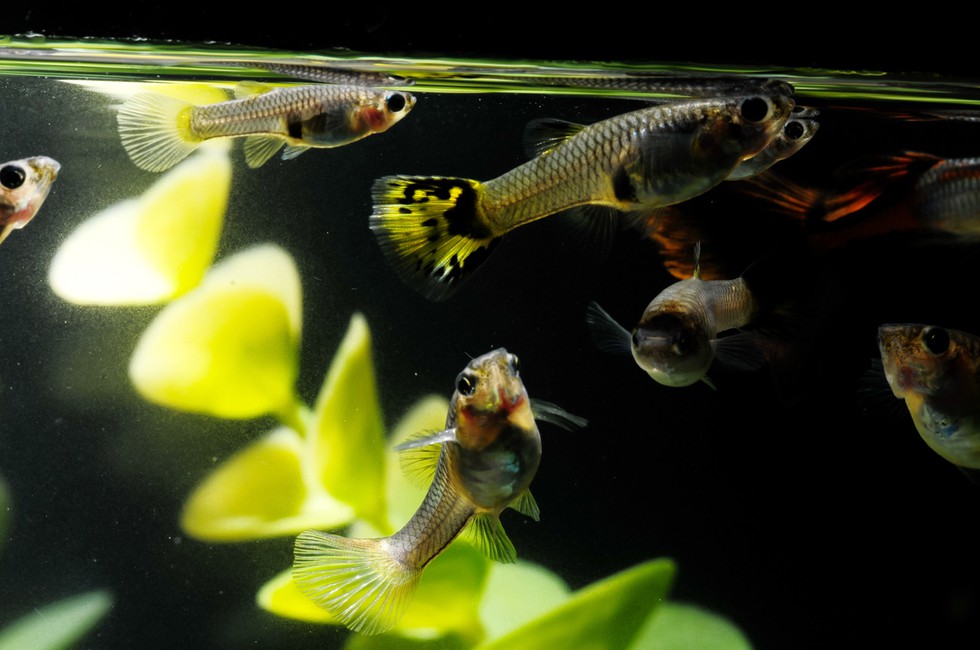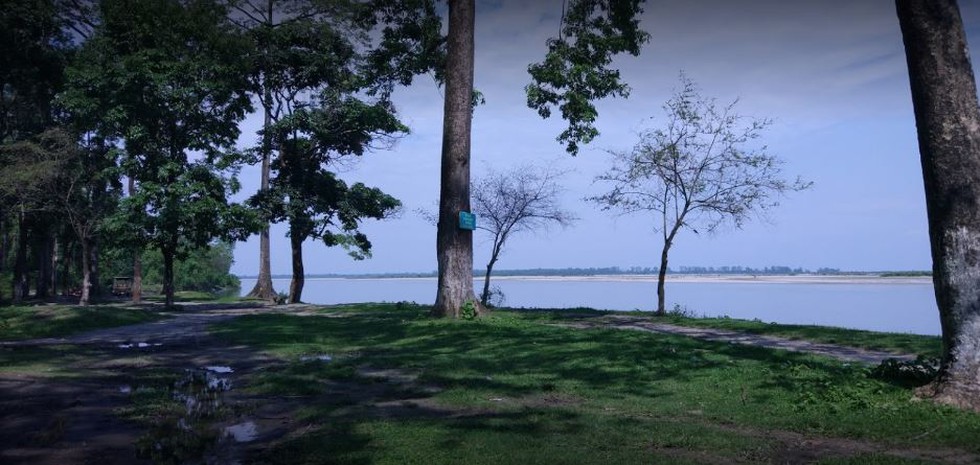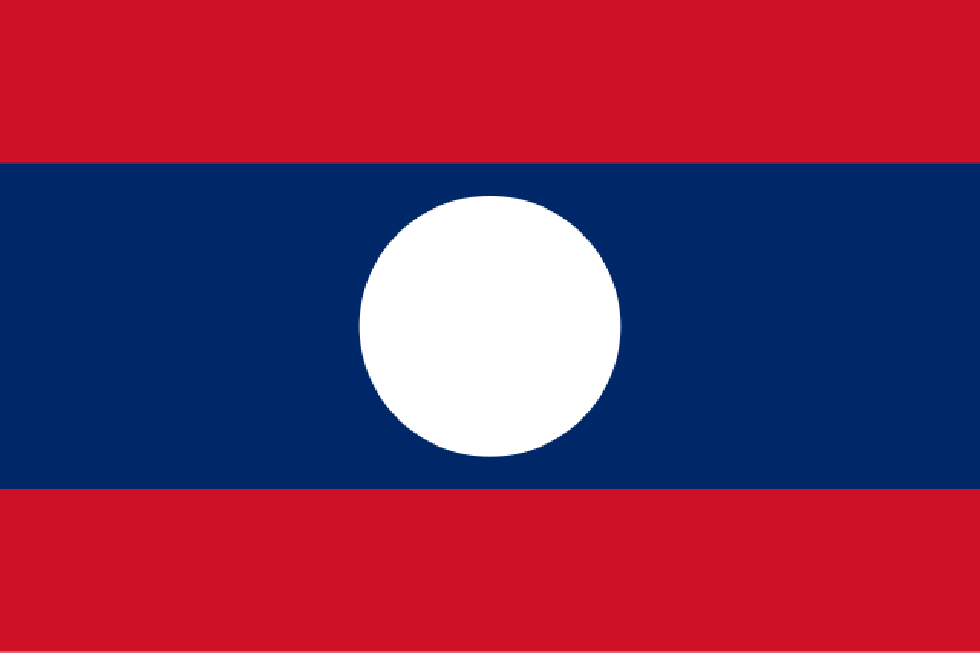About Guru Padmasambhava:
- Guru Padmasambhava, also known as Guru Rinpoche, lived in the eighth century in ancient India andne of the most-revered figures in Buddha Dhamma.
- He was known in Tibet as one of the founding fathers of Tibetan Buddhism, who appeared in Tibet in 749 A.D.
- He is credited with having spread the message of Lord Buddha to the countries and regions located in the Himalayan belt, including India, Nepal, Pakistan, Bhutan, Bangladesh and Tibet.
- He was a Tantrist and a member of the Yogācāra sect and taught at Nalanda, a centre of Buddhist studies in India.
- Guru Padamasambhava also represents a consolidation of many strands of culture ranging from Yogic and Tantric practices to meditation, art, music, dance, magic, folklore and religious teachings.
Key facts about International Buddhist Confederation
- It is a Buddhist umbrella body with its base in New Delhi that serves as a common platform for Buddhists worldwide.
- It was established under the patronage of the supreme Buddhist religious hierarchy, IBC currently has a membership comprising more than 320 organisations, both monastic and lay, in 39 countries.
2. Dispute Resolution Scheme
About Dispute Resolution Scheme:
- The scheme aims to reduce litigation and provide a faster and more cost-effective resolution for taxpayers.
- This initiative, established under section 245MA of the Income-tax Act, 1961, will allow taxpayers to resolve disputes electronically through Dispute Resolution Committees (DRCs).
- Eligibility:
- Taxpayers who meet certain conditions specified in section 245MA can apply for dispute resolution.
- This includes cases where the disputed amount does not exceed 10 lakh and the taxpayer's income for the relevant year is below Rs. 50 lakh.
- The dispute must not involve information from searches or international agreements.
- The DRC, established in all 18 regions across the country, can modify orders, reduce penalties, or waive prosecution. They are required to decide within six months of receiving the application.
3. Metal-organic framework

About Metal-organic framework:
- These are uniform structured porous materials suitable for solid-phase extraction.
- These are the multifunctional coordination polymers.
- What are 2-dimensional (2D) materials? These are a class of nanomaterials defined by their typical and unique property of being hardly one- or two-atom thick.
- The MOFs and 2D materials possess several unique features that should project them as better alternatives as sensors, than other nanomaterials.
- Both MOFs and 2D class of materials are known for their large surface area, functionality, and optoelectronic properties.
- They also have a wide range of synthesis methods and can be developed into disposable electrodes, optical kits, fiber optic sensors, colorimetric strips, etc.
- Applications
- To develop electrochemical and optical sensors for different analytes, such as bacteria, Aflatoxins, and heavy metals.
- It can be used for rapid and convenient detection of several health, food quality, and environmental parameters.
- These are also useful for analyzing food toxins such as Aflatoxins and Zearaloene in water, milk and staple food samples.
4. Fluoxetine

About Fluoxetine:
- It is a common antidepressant medication.
- It inhibits the uptake of serotonin by nerve cells (neurons) and helps people with depression, panic, anxiety, or obsessive-compulsive symptoms.
- Effects of fluoxetine
- At low concentrations, fluoxetine reduces activity levels and increases refuge-seeking behaviour in male guppy fish.
- It also altered their body condition, increased the size of their reproductive organs, and reduced sperm velocity. These effects could have significant implications for mating success and reproductive fitness in polluted waters.
- Fluoxetine exposure reduced behavioural plasticity in the fish, suppressing within-individual variation in both activity and refuge.
- Individual fishes are behaving more rigidly, potentially limiting their ability to respond flexibly to their environment.
- High fluoxetine concentrations increased variation in body condition between individuals, while low concentrations increased variation in sperm numbers.
Key facts about Guppy Fish
- These are a small, pretty species of fish that are extremely popular for home aquariums.
- These are a species of small tropical freshwater fish.
- These are sexually dimorphic, meaning there are distinct differences between males and females of the species.
- Male guppies are brightly colored in shades of black, green, orange, red, white, and yellow and have patterns like speckles, spots, and stripes.
- Distribution: Guppies are native to certain countries and islands in South America: Antigua and Barbuda, Barbados, Brazil, Guyana, Suriname, Trinidad and Tobago, and Venezuela.
5. World Gold Council

About World Gold Council:
- It is the market development organisation for the gold industry.
- It is a nonprofit association formed in 1987 whose members comprise the world’s leading and most forward-thinking gold mining companies.
- The WGC was established to promote the use of and demand for gold through marketing, research, and lobbying.
- Headquartered in London, with operations in India, China, Singapore, and the USA, the WGC covers the markets which comprise about three-quarters of the world's annual gold consumption.
- The WGC is also the global authority on gold, and they offer comprehensive analyses of the industry.
- It aims to maximize the industry's potential growth by monitoring and defending existing gold consumption.
- It achieves this by setting up gold standards, proposing policies, ensuring fairness and sustainability in the gold mining industry, and promoting the usage and demand for gold for individuals, industries, and institutions.
- It also co-sponsors research in the development of new uses for gold, or of new products containing gold.
- WGC was the creator of the first gold exchange-traded fund.
6. Poba Reserve Forest

About Poba Reserve Forest:
- It is a rainforest located in the northeastern part of Assam.
- The Reserved Forest (RF) was created in the year 1924 and covers an area of 10,221 hectares.
- Boundaries: Towards the north are the foothills of the Himalayan range in Arunachal Pradesh; towards the east and south are the Siang, Dibang, and Lohit River systems confluencig into the mighty Brahmaputra and the Dibru-Saikhowa National Park; and towards the west are the revenue villages of the Jonai Sub-division of the Dhemaji district of Assam.
- The peripheral area of the RF is inhabited by a few ethnic groups, such as Mising, Bodo, Sonowal Kachari, and Hajong (Rabha).
- It is one of the richest rain forests of North-East India in terms of the flora and fauna found in it.
- It is home to various arboreal species, including the slow loris and capped langur. Among the most common mammal species is the wild boar.
- The forest is also a habitat for about 45 species of birds and reptiles, and the confluence of the Siang and Lohit rivers supports a diverse range of fish species.
- The forest is renowned for its variety of orchids.
- It serves as an important migratory route for various animals, particularly elephants, as it connects the D' Ering Memorial Wildlife Sanctuary (Arunachal Pradesh), Kabu Chapri Proposed Reserve Forest, and Dibru-Saikhowa National Park (Assam).
- This corridor is the second significant elephant migration route from the north to the south bank of the Brahmaputra River, the other being the Panpur-Kaziranga route.
7. Anti-Dumping Duty

About Anti-Dumping Duty:
- It is a protectionist tariff that a domestic government imposes on foreign imports that it believes are priced below fair market value.
- Dumping is a process wherein a company exports a product at a price that is significantly lower than the price it normally charges in its home (or its domestic) market.
- The duty is priced in an amount that equals the difference between the normal costs of the products in the importing country and the market value of similar goods in the exporting country or other countries that produce similar products.
- It is imposed to protect local businesses and markets from unfair competition by foreign imports.
- Thus, the purpose of anti-dumping duty is to rectify the trade distortive effect of dumpingand re-establish fair trade.
- The use of anti-dumping measures as an instrument of fair competition is permitted by the World Trade Organization (WTO).
- The WTO allows the government of the affected country to take legal action against the dumping country as long as there is evidence of genuine material injury to industries in the domestic market.
- The governmentmust show that dumping took place, the extent of the dumping in terms of costs, and the injury or threat to cause injury to the domestic market.
- While the intention of anti-dumping duties is to protect local businesses and markets, these tariffs can also lead to higher prices for domestic consumers.
- In India, the Ministry of Finance makes the final decision on whether to impose anti-dumping duties.
What is Countervailing duty (CVD)?
- It is a specific form of duty that the government imposes to protect domestic producers by countering the negative impact of import subsidies.
- CVD is thus an import tax by the importing country on imported products.
- Why is CVD imposed?
- Foreign governments sometimes provide subsidies to their producersto make their products cheaper and boost their demand in other countries.
- To avoid flooding the market in the importing country with these goods, the government of the importing country imposes CVD, charging a specific amount on the import of such goods.
- The duty nullifies andeliminates the price advantage enjoyed by an imported product.
- The WTO permits the imposition of CVD by its member countries.
Countervailing duty v/s Anti-dumping duty:
- Anti-dumping duty is imposed to prevent low-priced foreign goods from damaging the local market. On the other hand, CVD will apply to foreign products that have enjoyed government subsidies, which eventually leads to very low prices.
- While the anti-dumping duty amountdepends on the margin of dumping, the CVD amount will completely depend on the subsidy value of the foreign goods.
8. Foot-and-Mouth Disease (FMD)

About Foot-and-Mouth Disease (FMD):
- It is a severe, highly contagious viral diseaseof livestock that has a significant economic impact.
- The disease affects cattle, swine, sheep, goats, and other cloven-hoofed ruminants.
- It does not affect horses, dogs, or cats.
- Intensively reared animals are more susceptible to the disease than traditional breeds.
- It is a transboundary animal disease (TAD) that deeply affects the production of livestock and disrupts regional and international trade in animals and animal products.
- It is not a human health or food safety threat. It is also not related to hand, foot, and mouth disease, which is a common childhood illness caused by a different virus.
- The organism which causes FMD is an aphthovirus of the family Picornaviridae.
- There are seven strains (A, O, C, SAT1, SAT2, SAT3, and Asia1) which are endemic in different countries worldwide.
- Immunity to one type does not protect an animal against other types or subtypes.
- Transmission:
- FMD is found in all excretions and secretions from infected animals.
- Notably, these animals breathe out a large amount of aerosolised virus, which can infect other animals via the respiratory or oral routes.
- The disease is rarely fatal in adult animals, but there is often high mortality in young animals.
- Symptoms:
- FMD is characterised by fever and blister-like sores on the tongue and lips, in the mouth, on the teats, and between the hooves.
- Ruptured blisters can result in extreme lameness and reluctance to move or eat.
- Other frequent symptoms are fever, depression, hypersalivation, loss of appetite, weight loss, growth retardation, and a drop in milk production, which can persist even after recovery.
- The disease causes severe production losses, and while the majority of affected animals recover, the disease often leaves them weakened and debilitated.
- It was the first disease for which the World Organisation for Animal Health (WOAH, founded as OIE) established official status recognition.
- Vaccines for FMD are available but must be matched to the specific type and subtype of virus causing the outbreak.
9. Acetanilide

About Acetanilide:
- It is a synthetic organic compoundwith a designated molecular formula of C8H9NO.
- It is also known as N-phenylacetamide, acetanil, or acetanilide.
- It is a white, odorless solid.
- It is functionally related to an acetic acid.
- It was introduced in therapy in 1886 as a fever-reducing drug.
- Its effectiveness in relieving pain was discovered soon thereafter, and it was used as an alternative to aspirin for many years in treating such common complaints as headache, menstrual cramps, and rheumatism.
- Excessive or prolonged use of acetanilide engenders toxic side effects: it interferes with the function of hemoglobin, the oxygen-carrying pigment of the blood.
- In the body, acetanilide is mostly converted to acetaminophen (paracetamol), which has replaced acetanilide in therapy because it is less likely to induce blood disorders.
- It is used as an intermediate in the production of dyes, rubber, and other chemicals.
10. Key Facts about Laos

About Laos:
- It is located in the Indochinese Peninsula in Southeast Asia.
- It is the only landlocked country in Southeast Asia.
- Official Name: Lao People's Democratic Republic
- History:
- Colonization by the French from the late 19th to the mid-20th century infused Laos with a European cultural element, which intensified throughout the country’s embroilment in World War II and the Indochina wars, as well as a civil war of its own in the second half of the 20th century.
- Guided by Marxist-Leninist ideology, Laos emerged from the turmoil in 1975 as a communist country.
- Bordering Countries: It is bounded to the north by China, to the northeast and east by Vietnam, to the south by Cambodia, to the west by Thailand, and to the northwest by Myanmar(Burma).
- Overall, the country extends about 650 miles (1,050 km) from northwest to southeast.
- Total Area: 236,800 sq km
- Highest point: Phu Bia 2,817 m
- Drainage:
- Major rivers—the Tha, Beng, Ou, Ngum, Kading, Bangfai, Banghiang, and Kong—are tributaries of the Mekong River, Southeast Asia's most significant river.
- The Mekong flows generally southeast and south along and through western Laos and forms its boundary with Myanmar and most of the border with Thailand.
- Climate: It has the typical tropical monsoon(wet-dry) climate of the region.
- Vegetation: It has tropical rainforests of broad-leaved evergreens in the north and monsoon forests of mixed evergreens and deciduous trees in the south.
- Major Mountain Ranges: Annamite Range, Luang Prabang Range
- Languages: Lao (official), French, English, various ethnic languages
- Capita: Vientiane
- Religion: The predominant religion of Laos is Theravada Buddhism.
- Money: Kip
- Form of Government:
- It is one of the world's few openly communist states.
- It is a one-party state, and the general secretary of the Lao People's Revolutionary Party holds ultimate power and authority over the state and government.


























































































































































.png)
.png)
.png)
.png)
.png)


.png)
.png)
.png)





.png)
.png)






.png)
.png)
.png)
.png)
.png)
.png)
.png)
.png)
.png)

.png)







.png)
.png)


.png)
.png)
.png)


.png)

.png)
.png)





.jpg)

.png)
.png)


.png)

.png)
.png)
.png)

.jpg)

.jpg)


.png)

.png)
.png)
.png)
.png)
.png)
.png)
.png)
.png)
.png)
.png)




.png)

.png)





.png)
.png)
.png)
.png)
.png)
.png)
.png)
.png)
.png)
.png)
.jpg)
.jpg)

.png)
.png)
.png)
.png)
.png)
.png)
.png)
.png)
.png)
.png)
.png)
.png)
.png)
.png)
.png)
.png)
.png)
.png)
.png)
.png)
.png)
.png)



.png)
.png)

.jpg)
.jpg)


.jpg)
.jpg)
.jpg)
.jpg)
.jpg)

.jpg)








.jpg)
.jpg)
.jpg)
.jpg)
.jpg)

















.jpg)
.jpg)







.jpg)


















.jpg)
.jpg)






























































































.jpg)
.jpg)


























.jpg)

.jpg)










.jpg)








.jpg)




.jpg)










.jpg)


















.jpg)












































.jpg)














.jpg)
.jpg)
.jpg)





.jpg)

.jpg)
.jpg)





































































.jpg)


































.jpg)
.jpg)
















































.jpg)












.jpg)


.jpg)




.jpg)
.jpg)
.jpg)

.jpg)
.jpg)
.jpg)
.jpg)

.jpg)
.jpg)
.jpg)

.jpg)
.jpg)
.jpg)
.jpg)
.jpg)
.jpg)
.jpg)
.jpg)

.jpg)


.jpg)
.jpg)
.jpg)
.jpg)
.jpg)
.jpg)
.jpg)
.jpg)
.jpg)
.jpg)











.jpg)
.jpg)





.jpg)
.jpg)
.jpg)
























.jpg)
























.jpg)









.jpg)
.jpg)







.jpg)
.jpg)









































.jpg)
.jpg)
.jpg)
.jpg)
.jpg)

.jpg)
.jpg)
.jpg)
.jpg)
.jpg)


.jpg)
.jpg)
.jpg)
.jpg)
.jpg)

.jpg)
.jpg)
.jpg)
.jpg)
.jpg)
.jpg)
.jpg)
.jpg)
.jpg)
.jpg)
.png)

.png)
.png)

.png)
.png)
.png)
.png)


.jpg)
.jpg)

.jpg)
.jpg)
.jpg)

.png)
.png)
.png)
.png)
.png)
.png)
.png)

.png)
.png)
.png)
.png)
.png)
.png)
.png)
.png)
.png)
.png)





































































-min.png)



.png)




.png)








































